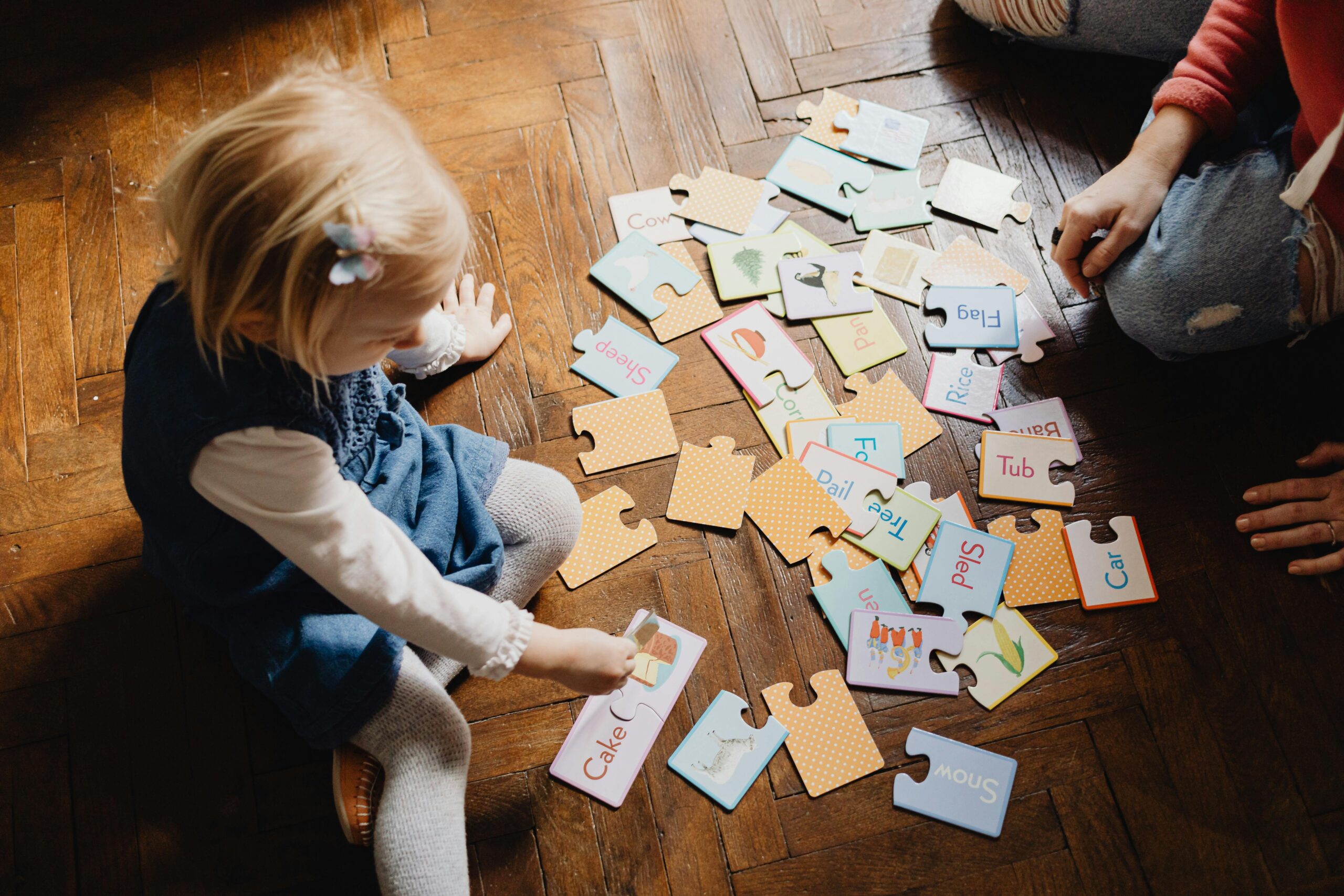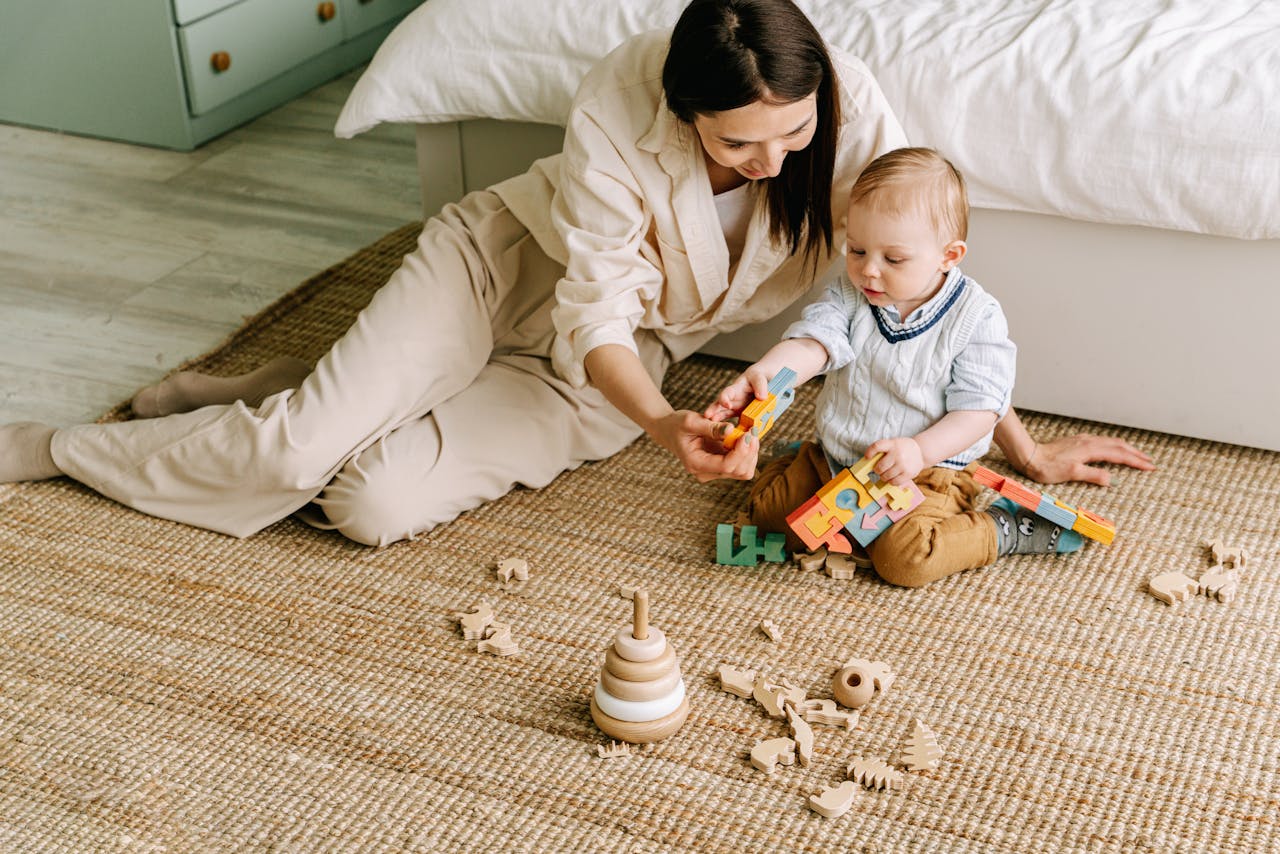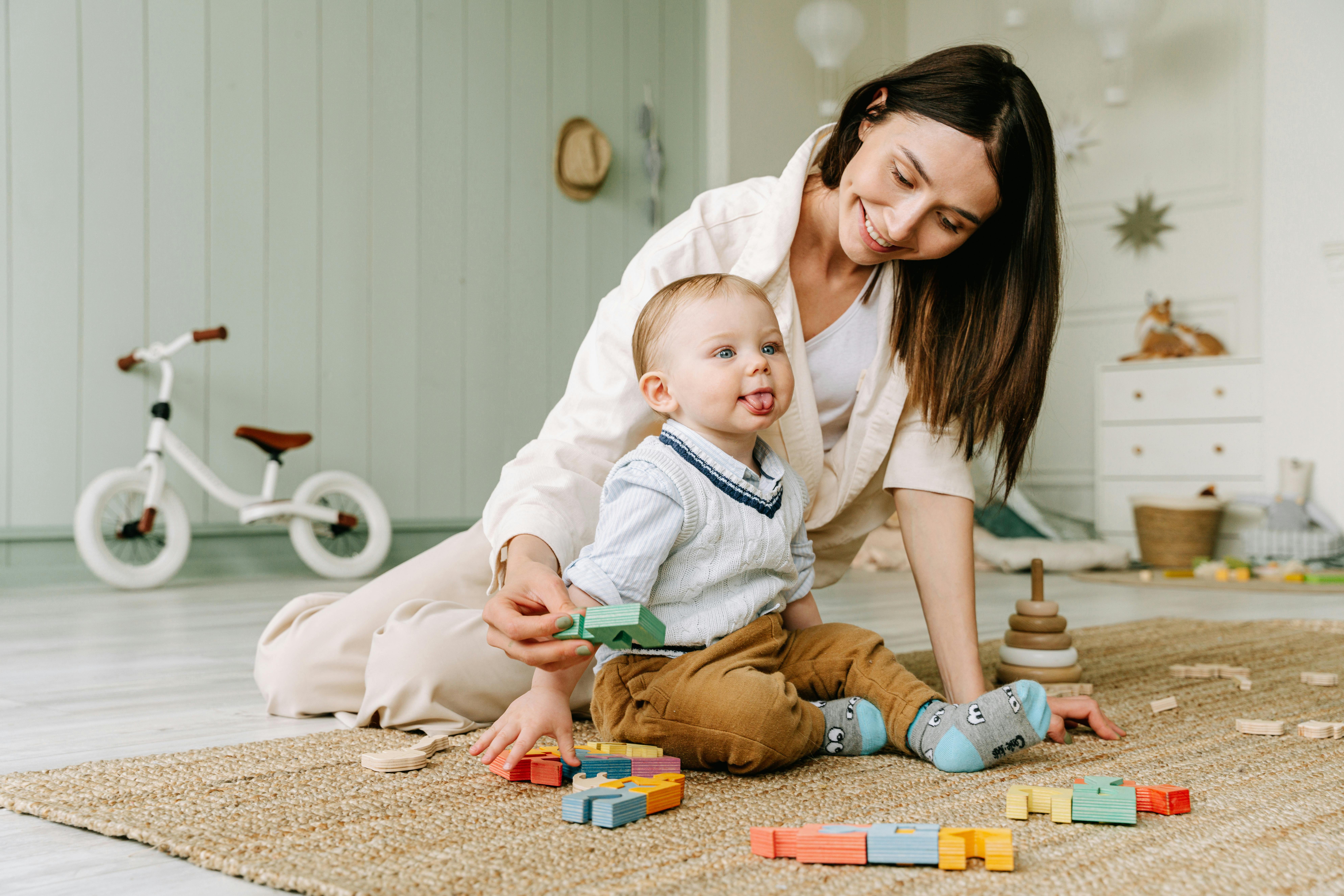👣 What Does It Mean to Follow Your Child’s Lead?
You’ve probably heard the advice: “Follow your child’s lead.” But what does that look like in real life — during playtime, on the floor, with a toddler who just dumped out every toy?
At its core, child-led play means letting your child guide the experience, while you support, observe, and respond — without directing or correcting.
This approach builds confidence, curiosity, and a deep sense of connection.
🧠 Why It Matters
When children are free to explore at their own pace, they become:
- More engaged (because the activity is self-chosen)
- More creative (because they aren’t being “taught” the right way)
- More confident (because they feel in control of the experience)
According to the American Academy of Pediatrics (2018), child-led play strengthens executive function — the mental processes that help with focus, self-regulation, and decision-making.
👀 How to Tell If You’re Leading or Following
You’re leading if you’re:
- Showing your child how to do it “properly”
- Asking lots of questions with “right” answers
- Taking over to speed things up
You’re following if you’re:
- Watching what they choose to explore
- Commenting gently on what they’re doing (“You placed it in sideways!”)
- Waiting before offering help — even if they struggle
Following doesn’t mean ignoring — it means observing, pausing, and trusting.
🧩 Toy Choice Makes It Easier
Not all toys lend themselves to child-led play. Toys with lights, sounds, or fixed rules often encourage passive interaction.
Instead, choose open-ended or self-correcting toys like:
- Wooden puzzles (where pieces only fit one way)
- Stacking blocks
- Matching cards
- Shape sorters or geography puzzles
These invite experimentation without demanding a “right” outcome — making them perfect for toddler-led discovery.
🪞Your Role: Mirror, Don’t Manage
Rather than instructing, try:
- Descriptive language: “You’re stacking all the triangles!”
- Curious reflections: “That one didn’t fit — what else could work?”
- Gentle presence: Just sitting close and offering encouragement
You’re not the director — you’re the co-player, witness, and emotional anchor.
💡 Final Thought
Child-led play doesn’t mean hands-off parenting. It means being tuned in without taking over. It’s about holding space for your child’s ideas, efforts, and little discoveries — even if they put the square in the circle hole ten times.
Let them lead. You’ll be amazed where they take you.
👉 Explore Toys That Support Independent Discovery
📚 Reference:
American Academy of Pediatrics (2018). The Power of Play: A Pediatric Role in Enhancing Development in Young Children. Pediatrics, 142(3).


